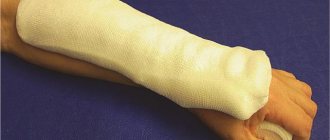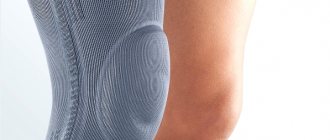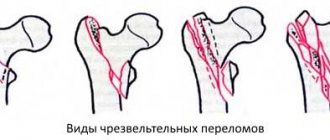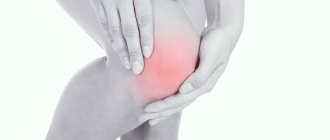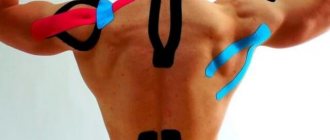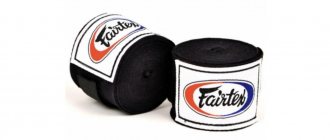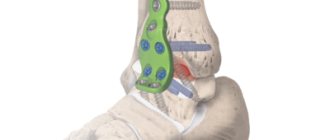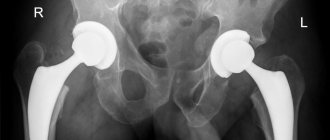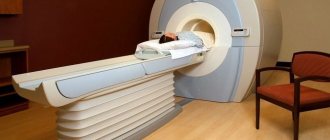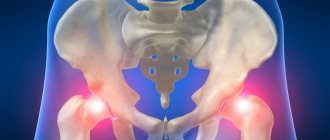A knee brace is an orthopedic leg brace that is worn around the knee joint and is used to stabilize the knee joint and stabilize the patella and support the meniscus and ligaments. There are several types of products on the market that go by the general name “knee brace,” but perform different functions and are prescribed for different medical indications. Some types of knee braces can be purchased independently, others are chosen only on the recommendation of a doctor, trainer or physical therapist. In any case, quite often an inexperienced consumer does not fully understand what knee pads are, and what type of product is right for him.
Especially for such cases, we have prepared a detailed article in which we will consider the main types of orthopedic knee pads, their function and application features.
Why are knee pads needed and who needs them?
The legs are an element of the musculoskeletal system, which, along with the spine, is subject to the most intense loads. At the same time, their joints are at greatest risk. Acute or chronic pain in the knee joints worries not only older people, but also young, physically active people.
In the first case, problems with the knee joints are associated with age-related degenerative processes. In the second, pain is a symptom indicating overload of the knee joint and its damage to one degree or another.
In addition, the cause of pain in young people is often various joint diseases or previous operations in this area.
So, wearing knee pads is prescribed:
- physically active people, athletes and people whose work involves significant stress on the knee joints. Wearing a bandage reduces the risk of injury due to high loads on the joints;
- in a complex of therapeutic measures in the treatment of inflammatory and degenerative diseases (synovitis, bursitis, arthrosis);
- for the treatment of fractures inside the joint;
- to maintain ligaments and muscles after sprain or ligament rupture;
- as part of rehabilitation after surgery or injury. In such cases, bandage provides immobilization of the injured area;
- with instability of the knee joint;
- infections and inflammations in the area of the joint capsule;
- with Schlagger-Osgood disease.
The main question is how to choose knee pads from a large assortment if the recommendations of a doctor or trainer were not entirely accurate? We'll tell you!
When are knee orthoses needed?
The knee is one of the most complex joints in the human body. It has three bones and six ligaments. In addition, this joint is subject to regular and high loads. This is why injuries to this part of the body are so difficult to heal and cure, and the rehabilitation period requires additional attention, strength and the use of devices - orthoses or knee braces.
Orthoses are used in different situations when it is required:
- for joint diseases: arthrosis, arthritis, inflammatory processes;
- for recovery after knee surgery;
- for dislocations, sprains or other similar injuries;
- for strengthening and rehabilitation of the joint after operations;
- when playing sports with heavy weights;
- with active dynamic loads on the legs: running or jumping;
- when using compresses on the knee;
- during pregnancy or excess weight.
For a competent approach to the question of how to choose a knee orthosis, it is necessary to take into account the fact that the products give different effects:
- warms or retains heat;
- fixes the knee;
- gives rigidity to the joint;
- limits movement;
- supports and compresses the tissues around the joint.
Depending on the situation, different knee orthoses are selected. So, when playing sports, you first need to support the joint and reduce the load on it, and the warming effect will also be useful. Additional heat in the joint will help make the joint more elastic, which, in turn, will protect against injuries - dislocations and sprains.
Conversely, if a dislocation, sprain or even a blow has already occurred, then additional heat to the joint can only increase swelling. In this case, what is required first of all is reliable fixation of the joint, tightening of the soft tissues around it to prevent the formation of hematomas and edema.
After operations, very rigid fixation of the knee in a straight position is required. This will allow the cartilage tissue to recover properly.
With arthrosis, strong fixation of the joint is required, as well as activation of blood circulation in it. Therefore, in this case, a tight, warming orthosis would be useful. Conversely, with arthritis, additional heat and warming up the knee joint can be harmful.
An incorrectly selected knee orthosis can provoke a more acute course of the disease or, conversely, have no effect. It is important to consult a doctor in each situation: how to choose the right option.
Knee pad hardness
Bandages for the knee joint differ primarily in the level of fixation of the joint. Thus, elastic knitted knee pads are used for sports and other types of physical activity. They provide soft fixation of the knee joint, providing a preventive or therapeutic effect.
Bandages with elastic stiffeners are prescribed for damage to the lateral ligaments or joint laxity. Most often prescribed during the rehabilitation period after injuries.
The toughest orthopedic knee pads are orthoses (straights), which are used to immobilize the knee joint. They are essentially taxes on the cast.
A separate type can be considered compression bandages, which are characterized by minimal compression, but have a noticeable warming effect.
It is worth understanding that this is only the basic classification of knee pads. In fact, there are a great many models of knee pads and each of them differs from the previous one in special modifications.
We propose to consider the well-known models in more detail.
Why are knee pads needed?
The range of indications for wearing knee pads is very wide. At the same time, one or another type of fixative is more suitable for each group of pathologies. The most typical situations in which a knee brace will be effective are:
- Arthrosis of the knee joint.
- Sports pain syndromes: “jumper’s knee”, “runner’s knee”, crow’s foot syndrome and others.
- Synovitis and bursitis of the knee joint.
- Instability and tears of knee ligaments.
- Increased physical stress on the knees: athletes, people involved in physical labor.
In many cases, a good, properly fitted knee brace will reduce the need for medications and promote faster recovery. Certain knee braces have been shown to increase knee stability through both mechanical action and muscle activation. In recent years, the frequency of use of knee braces has only increased due to the emergence of new materials and models of bandages.
Compression warming knee pad
Provides minimal to medium compression. A period of rehabilitation after sports and domestic injuries is prescribed to fix the patella and stabilize the knee joint. It is also used to prevent sprains and dislocations, and has a warming effect for arthrosis and arthritis. The bandage fixes and warms soft tissues and superficial vessels, improving blood circulation.
Made from cotton-based knitwear or natural wool.
Classification of orthoses and main selection criteria
Modern orthopedic orthoses differ in:
- purpose - for the spine, neck, joints of the limbs;
- material - ortho-devices are made of cotton, elastane, neoprotene, spandex, wool; polyester or nylon are used as additional materials;
- manufacturing method - individual (made from casts taking into account the peculiarities of human anatomy in the workshop) and ready-made (factory);
- degrees of rigidity - immobilizing (rigid, equipped with plates and ribs made of metal, used for deformations of the musculoskeletal system and complex injuries), semi-rigid (they have stiffening ribs made of plastic or metal and clamps - belts, Velcro, fasteners; used to eliminate or reducing pain, treating diseases of the back, limbs, reducing stress on joints) and supporting (soft, made from wool or elastic fabrics, designed to prevent injuries to the back, arms and legs, for minor injuries they perform a warming function and have a massage effect).
If you need a specific ortho-device, be sure to use your doctor’s recommendation. Traumatologists or orthopedists prescribe such medical devices. Only an experienced specialist will help you choose the right orthosis. When choosing a product, it is important to take into account not only the nature of the pathology, but also the presence/absence of skin problems and body shape. Often it is impossible to do without taking measurements (the location of the change depends on the type of orthopedic device).
Elastic sports knee pad
This knee brace provides enhanced compression of the knee and can be supplemented with ties. Designed to fix the knee joint when it is damaged, but at the same time maintaining the opportunity for physical activity.
Main functions and features:
- effectively supports and fixes the knee;
- provides uniform compression without restricting movement;
- does not cause discomfort due to the anatomical design;
- Made from stretch cotton jersey, neoprene, lycra or nylon. Designed to remove moisture (generated during sports) from the body and quickly evaporate it.
Recommended for athletes and people who remain physically active after receiving a knee injury.
A separate model of an elastic knee pad can be considered a knee pad with a patellar ring and side springs. The springs prevent lateral loading or torsion, and the ring relieves stress on the patellar tendon.
Fixation of the knee joint using a splint
A splint for knee joints is a fixation product used in orthopedics. It is made from a rigid base. Straps or lacing allow you to comfortably fix it on your leg. The splint is produced both in Russia and abroad. It is made from:
- skin;
— polymer materials;
- metal alloy;
- plastic.
If the splint is made of leather or fabric, then it is additionally reinforced with a metal frame into which splints or half-rings are inserted.
An orthosis is also an orthopedic device that is similar to a splint. Only it already has hinges located in the area of the knee joint.
When to use a splint?
Splints come in various shapes, configurations, sizes and purposes. It can be used at any age. Specific models of splints are capable of performing one or a number of the following functions:
- completely replace the plaster splint or splint;
- firmly fixes joints during treatment, during postoperative recovery or rehabilitation;
- reduces pain from injury;
- preventive function for fractures and osteoporosis;
- allows you to prevent complications and relapses;
- not only fixes, but also corrects deformed joints, as well as limbs;
- gives the affected joint a state of rest;
- speeds up the healing process.
Are there any contraindications for use?
The splint, like any other medical product, has its own contraindications for use. The splint cannot be used for:
- violation of the integrity of the skin (cuts, wounds, abrasions);
- formation of ulcers, abscesses, ulcers and boils;
— hyperkinesis and muscle spasm;
- failure in the circulatory system of the legs.
In any case, it would be a good idea to consult an osteopath before using a splint.
How to choose a splint?
All splints, regardless of the age category of the patients using them for therapeutic purposes, are manufactured in mass production. They can be bought both in the online store and in the orthopedic salon.
If you are purchasing a splint for a child, it is best to have it custom-made according to the patient’s individual measurements, taking into account all the features of his lower extremities. Products for children must meet special requirements, such as:
- ideally fix joints;
- not to be heavy;
- be resistant to wear;
- be easily adjustable;
— consist of safe materials;
- be hygienic.
In a product made according to an individual cut, the patient can not only walk during the day, but also lie in bed at night.
As a rule, splints are worn for an extremely long time. For children, they are made from fairly elastic and durable breathable materials using gaskets that allow air to pass through. The design of the splint is detachable, it allows you to easily remove it for hygienic and therapeutic procedures.
The most popular universal splints are German products from the ORLETT brand. They are used to restore knee joint function in 95% of cases with neurological, traumatic and neurosurgical diseases. The product is extremely convenient and easy to use. It is also safe.
ORLETT must be correctly selected for the patient’s knee. To do this, it is worth measuring the circumference of the joint (along the central part of the knee). Select the desired size indicators from the size chart.
Size S corresponds to a joint circumference of 20 to 22 cm;
M – from 23 to 25 cm;
L – from 26 to 29 cm;
XL – from 30 to 33 cm;
XXL – from 34 to 39 cm.
The product for an adult is fixed using five splints made of metal and cuffs. The belts have fasteners, which allows you to change the parameters of the product if necessary.
Children's products of the same brand have 3 tires (rear and sides).
If the choice is from Russian-made products, then you need to look at 3 parameters.
Make sure not only to choose the right product, but also to ensure that it is properly fixed on your leg. If you put it on incorrectly, the healing process may be significantly delayed. To prevent children from getting abrasions on their skin from the splint, wear tights under the device.
Device price
When choosing a splint, just like any other medical device, buyers pay attention to the ratio of the criteria “price” and “quality”. Products are presented in different price ranges.
The price of a tutor consists of:
- its purpose;
- difficulties;
— materials;
— manufacturer (domestic or foreign).
On average, a tutor costs from 1.8 to 4 thousand rubles.
Author: K.M.N., Academician of the Russian Academy of Medical Sciences M.A. Bobyr
Universal knee brace with ties and meniscus support
Such products include wraparound bandages with adjustable coverage and meniscal support.
Prescribed for:
- dislocated knee;
- instability of the kneecap;
- lateral tilt of the kneecap;
- in the postoperative period;
- when softening cartilage tissue.
The product provides reliable fixation of the knee without depriving you of freedom of movement. The knee pad is easy to put on thanks to the front fasteners, and additional elastic straps create the necessary compression effect.
Such bandages are often equipped with a hole. They stabilize the kneecap, promote recovery from cruciate ligament injuries, and limit excessive back-to-front motion.
Knee pads with stiffeners
Knee pads can be equipped with elastic or metal ribs that provide different levels of fixation. The choice depends on when to wear knee pads and for what indications. Knee pads with elastic stiffeners act as analogues of elastic bandages - they fix the knee and meniscus, relieve the joint and the musculoskeletal system as a whole, without limiting mobility.
Knee pads with rigid ribs and metal hinges perform similar functions, but are prescribed for more serious injuries and illness.
These knee pads are indispensable for:
- developing arthritis;
- arthrosis;
- osteochondrosis;
- damage to cartilage tissue;
- meniscus tear.
The main difference between such knee braces and orthoses is that they maintain knee mobility.
Types of knee braces
There are hundreds of knee braces available to prevent and treat illnesses and injuries. Every manufacturer strives to invent something new and especially effective. Moreover, absolutely all products of this type can be divided into three large groups.
- Compression or soft bandages. The main emphasis of such products is on interaction with the skin and muscles of the knee pad tissue. It applies gentle pressure to the leg, reducing swelling and pain. In addition, with movements and muscle tension, the degree of compression of the product changes rhythmically, which enhances the massage and stimulating effect.
- Bandages with elastic stiffening ribs and massage silicone inserts. “Advanced” compression bandages for additional stimulation of ligament and muscle receptors. Relief bulges and protrusions intensely massage biologically active zones.
- Knee pads with joints. Products that stabilize the knee joint. The hinges allow the knee to move within normal limits and at the same time eliminate pathological deviations.
As additional elements, silicone rings for fixing the knee pad, straps, holes or zones of increased fabric strength can be built into all types of knee pads. There are special models for certain diseases: patellar instability, cruciate ligament ruptures, Baker's cyst.
What determines the choice of knee brace?
The choice of a knee brace largely depends on the problems that concern the patient. The diagnosis is of secondary importance. For example, with arthrosis of a joint, pain predominates in one person, and joint instability in another; one has synovitis, and another does not. In general, choosing a knee brace comes down to two key characteristics:
- At the slightest instability, knee pads with a hinge are recommended. These are, of course, ruptures of the cruciate and lateral ligaments of the knee, grade 2-3 gonarthrosis, conditions after removal of the meniscus, and so on. Additional massage inserts will reduce pain and help you feel your knee better.
- For swelling and synovitis, compression bandages are recommended. They are relevant for arthrosis, many arthritis, Baker's cyst. Additional elements will also be relevant here: silicone rings, spiral stiffeners, etc.
In many ways, the choice of a knee brace depends on the sensations and sensitivity of the patient. One person wants the most intense sensations from massage inserts, while another, on the contrary, cannot stand the slightest irregularities in the knee. Medtechnika Orthosalon has a large selection of modern knee pads from the best manufacturers. Both in salons and in the online store you can get detailed advice and choose the most effective option.
Orthoses (splints) for the knee
In turn, a knee orthosis or brace is designed specifically to immobilize the leg and knee joint.
This is a rigid orthosis that covers not only the knee, but also the thigh and lower leg, equipped with a wide fixation system. It is used as a replacement for a plaster cast, greatly surpassing it in functionality:
- the orthosis allows you to adjust the fixation of the knee and bones in case of fractures without displacement or ligament ruptures according to individual parameters;
- features a more rigid and ergonomic fixation;
- it can be removed for cleaning or hygiene procedures;
- helps to avoid problems with the skin under the bandage or bedsores.
The orthosis interferes less with adequate blood supply and generally provides greater comfort.
In our catalog you will find almost all of the listed models of knee pads, as well as ankle braces and orthopedic products for legs and fingers. All children's and adult sizes available.
- Knee brace OPPO Medical 4139
12,500.00₽
Add to cart
- Orthosis (Brace) for the knee joint with polycentric hinge locks Orto Professional AKN 558
11,500.00₽
Choose …
- Elastic knee bandage Ecoten KS-E
1,450.00₽
Choose …
On knees. How to choose a knee brace
The season of active sports is beginning, and we want to remind you why knee braces are needed.
For the new season, we have opened a new section on our website. And, although part of the range is not “purely sports”, it is worth paying attention to. Today we decided to briefly talk about what means of prevention and rehabilitation we offer for the knee joint.
The obvious about the knee joint
The knee joint is one of the most loaded joints in the life of both an ordinary person and an athlete, since they undergo a significant range of movements, which in itself leads to wear and tear. During training, the intensity of movements increases many times, and the ligamentous apparatus does not always cope and can limit hypermobility.
This leads to injuries and damage to the knee joint and, depending on the degree, long or short rehabilitation.
Two directions for using calipers
In this regard, it is customary to distinguish two models of using knee braces: prevention and rehabilitation, including in the postoperative period.
If with prevention everything turns out to be relatively simple and understandable, then in the rehabilitation direction everything is not so obvious. Here are just a few cases where doctors find the use of calipers advisable.
- Postoperative recovery
- After injuries
- Feelings of “unstable” walking
- Knee valgus
- Reducing pain due to arthrosis, arthritis, synovitis
- Intra-articular fractures
and a number of other violations.
Moreover, for almost every case the choice occurs according to a very individual scenario.
Let's give an example
For example, with arthrosis of the knee joint, it is advised to take into account factors such as the location of pain, the degree of joint impairment, and pain.
Taking this into account, you will have to choose from about 5-6 possible options for knee pads, both open and closed.
Closed type
Usually elastic, since its task is soft fixation on all sides to make walking easier. Most often recommended for people with uncertain localization of pain.
Soft open knee brace
Recommended for facilitating knee bending, including when going up and down stairs.
Open with adjustment
It is advisable to use it after minor surgical interventions, since after swelling subsides, such a bandage will be easy to adjust (tighten) to fit the leg. Also indicated in the initial stages of arthrosis with mild pain.
Articulated
Designed for long-term wear after serious injuries and operations. By and large, it is an analogue of a cast that allows you to move without losing muscle tone. Also indicated for severe pain at any stage of the disease.
Also, some types of bandages can have integrated heating media.
Several fixation methods should also be distinguished:
- Mild - initial stages of the disease, rehabilitation period after surgery
- Hard - acute pain syndrome
- Tight - the last stages of arthrosis with deformation
Proof
The wide applicability of this kind of devices is usually presented very generally on the Internet, they say, it works and that’s it. It is not always so. There are a number of weakly proven and controversial experiments on individual cases when the appropriateness of using bandages is called into question.
As it was before
The text has already made a comparison that a hard knee pad is an analogue of a plaster cast. It's almost like that. Before calipers and bandages came to the market, plaster casts and splints were used as fixatives.
Their main disadvantage was that they practically made it impossible to move independently, which, with long-term rehabilitation, led to muscle atrophy. The current “generation” of rehabilitation materials still leaves a lot of freedom for people.
And bandages! Bandages can also relieve knee pain in some cases and can serve as a rehabilitation aid.
Orthosis, splint, bandage - what to look for
There are quite a lot of “names” for fixing knee braces, and although they will differ in nuances on the Internet, most likely they will act as synonyms, so one way or another, when you search for “splint”, “orthosis”, “support” you will get to the same sites with the same assortment.
In this regard, you will have to pay attention to the characteristics.
First, understand what is needed: prevention or treatment. Preventive supports can be indicated during intense exercise and systematic participation in active sports. Also, indications for preventive or “maintenance” calipers include obesity. Increases the load on the knee joint and pregnancy.
Fasteners
They reduce the range of motion and are used for existing joint damage, when lifestyle and stress can significantly aggravate the disease. Such a support is, as it were, “additional ligaments”. At the same time, if you choose a compression brace, this will help reduce pain when walking.
Immobilizer
Rigid brace for use after serious injuries and operations when it is necessary to immobilize the knee joint. Recommended as an analogue of gypsum, and, as stated, rehabilitation is accelerated.
To unload the joint
Such a bandage will support the knee joint in the correct position. This will minimize pain and reduce the risk of microtrauma, for example, in acute arthritis.
Sports prevention
Let's go back to sports season for a while. Basically, to prevent sports injuries, it is proposed to use “simple” solid calipers.
They are made from fabric or synthetic materials, may have an open part for the knee joint, and are designed to provide soft “base” support. They protect against hypothermia and reduce the risk of minor injuries and sprains. You can also train in them with minor bruises. These include, for example, the following samples: McDavid 6440 and McDavid 6446.
McDavid and L.P.
The most popular and fairly well-known manufacturers in this niche are brands and McDavid. The latter is more in the West, the first is in Russia.
The LP range, like the McDavid range, offers a wide selection of support bandages for topical use: shin, wrist, knee. McDavid is more expensive.
Let's show a little closer what the two most similar models of bandages look like: LP 720 and McDavid 422.
Both models are among the most popular for knee joint pathologies.
They are reinforced with side plates, which allow you to limit movements by assigning them a certain algorithm.
Both models are made of neoprene, which increases the service life of such a device.
They are characterized by an average degree of protection with partial limitation of mobility; they can be used for degenerative damage to the knee joints to reduce pain or after complete immobilization of the patient. These are perhaps the most “medical” ones in our catalog.
Eventually
Starting from the simplest, most supportive ones, we can say that knee supports are universal, or, in other words: suitable for everyone. The simplest ones can be called “ compression
» bandages. Their main general purpose is to prevent injury, they strengthen the physiological position and stabilize the knee. These are the most “sporty” calipers; they are very popular among those who run.
Functional
Knee pads are designed to preserve and maintain the function of the damaged joint. They are not universal in terms of use, as they partially limit movement and are used in medicine as a means of rehabilitation after joint damage, for arthritis, arthrosis and to reduce pain.
Stabilizer supports
help when rigid fixation is necessary. This is an alternative to plaster and splints. Often used when transporting a patient.
Complex or combined
- a separate class of transforming devices that are intended for patients undergoing long-term rehabilitation.
In the process, they can perform several functions, replacing a number of devices. For the wrist Also note: sports and rehabilitation wrist braces. Take care, have a great sports season!
